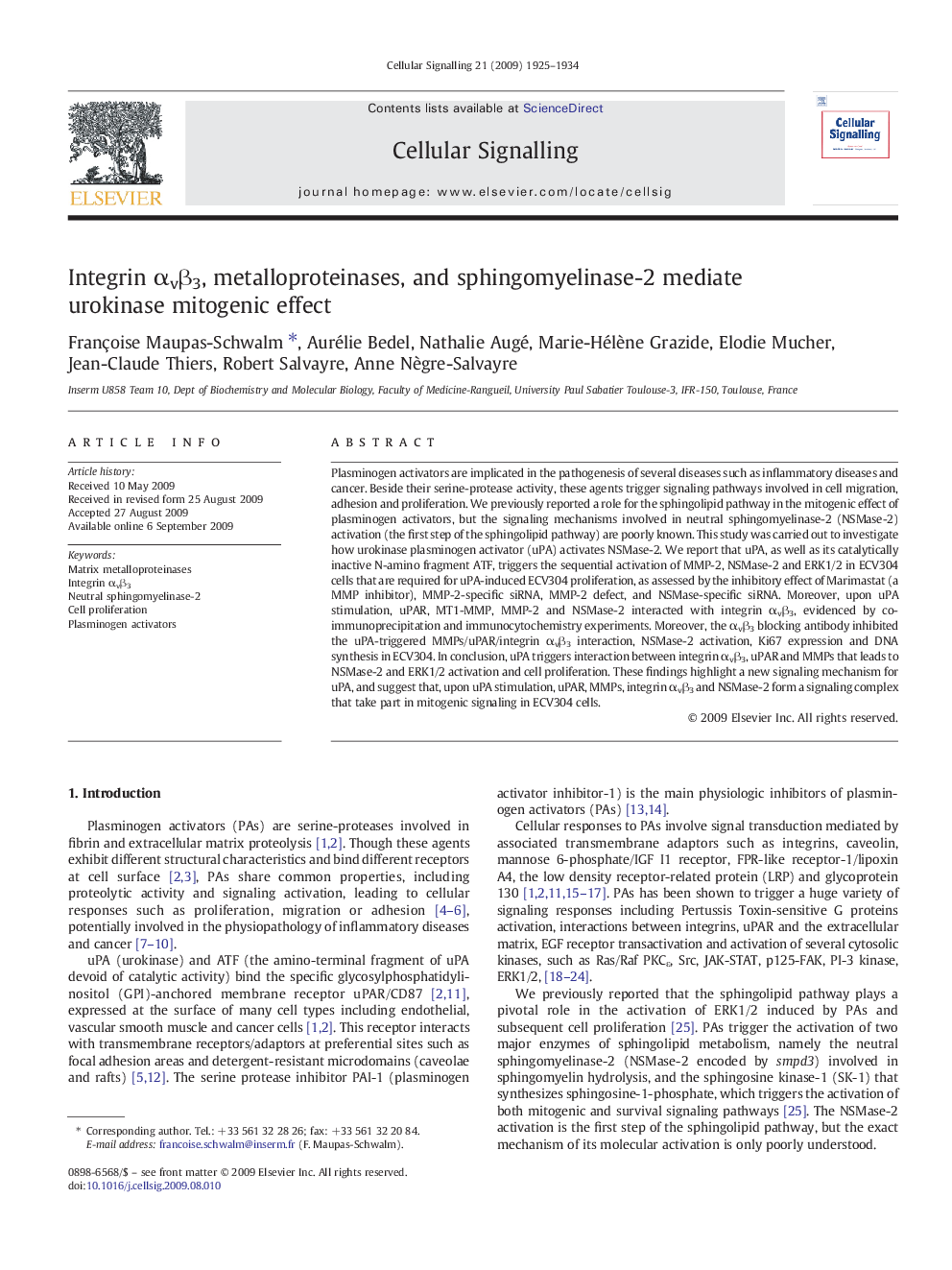| Article ID | Journal | Published Year | Pages | File Type |
|---|---|---|---|---|
| 10816878 | Cellular Signalling | 2009 | 10 Pages |
Abstract
Plasminogen activators are implicated in the pathogenesis of several diseases such as inflammatory diseases and cancer. Beside their serine-protease activity, these agents trigger signaling pathways involved in cell migration, adhesion and proliferation. We previously reported a role for the sphingolipid pathway in the mitogenic effect of plasminogen activators, but the signaling mechanisms involved in neutral sphingomyelinase-2 (NSMase-2) activation (the first step of the sphingolipid pathway) are poorly known. This study was carried out to investigate how urokinase plasminogen activator (uPA) activates NSMase-2. We report that uPA, as well as its catalytically inactive N-amino fragment ATF, triggers the sequential activation of MMP-2, NSMase-2 and ERK1/2 in ECV304 cells that are required for uPA-induced ECV304 proliferation, as assessed by the inhibitory effect of Marimastat (a MMP inhibitor), MMP-2-specific siRNA, MMP-2 defect, and NSMase-specific siRNA. Moreover, upon uPA stimulation, uPAR, MT1-MMP, MMP-2 and NSMase-2 interacted with integrin αvβ3, evidenced by co-immunoprecipitation and immunocytochemistry experiments. Moreover, the αvβ3 blocking antibody inhibited the uPA-triggered MMPs/uPAR/integrin αvβ3 interaction, NSMase-2 activation, Ki67 expression and DNA synthesis in ECV304. In conclusion, uPA triggers interaction between integrin αvβ3, uPAR and MMPs that leads to NSMase-2 and ERK1/2 activation and cell proliferation. These findings highlight a new signaling mechanism for uPA, and suggest that, upon uPA stimulation, uPAR, MMPs, integrin αvβ3 and NSMase-2 form a signaling complex that take part in mitogenic signaling in ECV304 cells.
Related Topics
Life Sciences
Biochemistry, Genetics and Molecular Biology
Biochemistry
Authors
Françoise Maupas-Schwalm, Aurélie Bedel, Nathalie Augé, Marie-Hélène Grazide, Elodie Mucher, Jean-Claude Thiers, Robert Salvayre, Anne Nègre-Salvayre,
